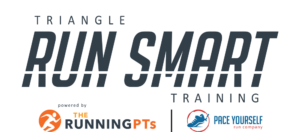12 Half Marathon Training Tips to Run Your Best Race
So, you want to run a half marathon: where do you start and what all do you need to consider going into training? And, yes, you do have to properly train to cover this distance. The half marathon distance is very popular for its challenge, but it does not require the greater time commitment in training that a full marathon does. It’s easier to fit the half marathon training into your schedule. Here are 12 half marathon training tips to help you get started and make it through race day.
1. Time Commitment
Allow at least 12 weeks to fully train for a half marathon, and allow longer (16-20+ weeks) if you are starting from scratch in running. It is ideal to come into a 12-week half marathon training program with a base level of running: 15-20 miles of easy running per week for several weeks prior. This will decrease injury risk by allowing your bones, muscles, and tendons to get stronger and used to the high impact of running prior to increasing your miles. You should aim to have 4 runs per week during training, to include: 2 “quality” workouts of speed intervals, hill repeats, and tempo runs, 1 easy shorter run, and 1 long run. Also, be sure to have 2 strength training days (these workouts should be full body and not too intense; no weights needed if you don’t have them!), and 1-2 cross-training days (workouts should be low impact, like swimming or biking). Make time to stretch as well. Do dynamic stretches prior to runs and static stretches after runs.
2. Training Plan
There are many half marathon training tips and plans that can be found online, but it’s good to get one from a reputable coach. There are group training programs in our area, (Triangle Run Smart Training), or you can find personal coaches who offer individualized plans customized to meet your exact needs. A good half marathon training plan should include the types of runs mentioned above, have a gradual increase in weekly mileage and long run distances, have peak and down weeks, and include a taper (way less distance and less intense workouts) in the 2 weeks before race day. You do not need to run 13.1 miles before a half marathon in training unless you are a veteran half marathoner with a more aggressive time goal. A maximum long run of 11-12 miles in training is sufficient training to get you through a half marathon race. Group training is a great half marathon training option in that you get a good training plan, a coach to help lead you along the way, and running partners aiming for similar goals.
3. Expectations and Goals
First time half marathoners should not have a race goal time. The main goal is to finish the training AND race healthy. Veteran runners can benefit from this as well, as many runners focus solely on goal race times and are disappointed if they miss that goal. Set good expectations going into a training season and race. If starting from scratch or after an injury, aim for a “just finish healthy” goal. Run a comfortable race and focus on enjoying the experience. If your training goes off track due to illness, injury, or just life conflicts, adjust your expectations going into race day and adjust your training to deal with these setbacks.
4. Picking YOUR Goal Race
It can be easy to take on a friend’s goal race without considering what is the best half marathon race for you personally. Things to consider: do you need lots of crowd support, do you prefer more elbow room/space while running and want a small race, can you comfortably run a half marathon distance on concrete or pavement, does a hilly route zap your energy and motivation, are you worried about time cut-offs, do you want to run with music, do you want a medal and nice swag, etc. Look into all of these race details before picking the best race for you.
5. Running Gear
For covering the half marathon distance, there may be a bit more running gear to consider compared to a casual, shorter run. Make sure to get fitted and test out good running shoes – before you start training, get comfortable moisture-wicking run clothes (this includes good running socks!), reflective gear & headlamp if you’ll be running in the dark, hydration (handheld water bottle, hydration belt or hydration vest) and fueling (for gels, chews or other fueling) holders, GPS watch (if you’d like, but helpful for tracking distance while training) and phone holder.
6. Hydration and Fueling
Half marathon training will require you to take in hydration and fueling on your longer runs. Be sure to get the gear you need to carry these items and try out different hydration & fueling options early in your training to find what works best for you. Hydration should include more than just water. Be sure to add in electrolytes, even in cold weather training. There are many brands to choose from. Find the brand and flavor that you like best. Fueling properly will help keep you energized throughout your long runs. There are many options to choose from: gels, chews, fueling added into hydration mixes, and real food.
7. Training Schedule
Plan your training schedule to work within your own needs, around work and family life. It will take some coordination, but find what works best for you. Are you an early riser? Do you prefer evening runs? When is best to fit in your training runs where there is less interference with potential conflicts, (i.e. working around kids’ sports schedules). Do you travel for work? It helps to have your schedule planned out well in advance to limit conflicts and be able to see what you have coming up. There will be conflicts that arise; don’t stress: go through the options to adjust your schedule and fit in workouts the best you can. A missed workout here and there will not ruin your entire training cycle; just try to limit the impacts.
8. Stick to Your Training Plan and Pace
It can be easy to attempt to do more distance and faster pace than your training plan calls for, especially as you start the training season fresh or if you find yourself running with others who have different goals. This greatly increases your injury risk over time and will impact your main goal: to finish the half marathon training and race healthy. Stick to YOUR plan and your running needs even when running with others or when feeling like you’re capable of running more or faster. Get through your goal race and then you can look at a potentially more aggressive goal for a future training season.
9. Something Hurts
Some normal aches and pains from half marathon training are common, but if a pain does not go away with a couple days of rest, it’s time to get it checked out by a physical therapist. Many times all you need is some recovery work and suggestions on strength exercises or stretches to get better, but you also want to be sure not to ignore a more serious injury that needs further rest to recover.
10. Bad Weather
At the first chance of wet or cold weather, do you bail on your run? You never know what weather will greet you on race day, so it’s much better to get some practice in ALL weather. Rain in particular is challenging and you need to find the gear and clothing that works best for you in it. Some suggestions: layers (depending on temperature), a light rain jacket, a hat (to keep water out of your eyes), plastic baggies for your fueling, body glide on areas that might chafe when wet, etc.
11. Practice for Race Day
Throughout training, you want to practice things you’ll use on race day: hydration & fueling (including how to carry them and when to take each), your running shoes, running clothes, simulate race route conditions on several of your long runs (by running on trail if you have a trail race, run on pavement for a road race, run on a hilly route for a hilly race, etc.), have some long runs done at a similar time to your goal race starting time (i.e. don’t run all of your long runs at 5am if you’re going to have a goal race at 10am), practice your pre-race fueling (night before & morning of), and plan ahead for tough times in the race with some mental strategies to get through them.
12. Nothing New on Race Day
These half marathon training tips will serve you well: nothing new on race day! That includes: fueling, hydration, run shoes, run clothes, or any other gear. Make sure you’ve practiced all of these things well throughout training and don’t stray from the tried and true for you!
Half marathon training takes some planning and time commitment, but it is an achievable goal for many! Follow these 12 half marathon training tips and you’ll get there!

About the Author
Coach Kelly Svihovec is the Training Coordinator and a Run Coach for Triangle Run Smart Training. She was formerly a Run Coach and Training Coordinator at Life Time in Cary, NC for 3 1/2 years, and is a stay at home mom to 3 young kids, who’ve participated in the run classes over the years. She’s a lifelong soccer player, turned into distance runner in 2005. She’s run too many half marathons to count, 2 full marathons, a 20-mile trail race twice, relay races, and many shorter distance races (road and trail). She has a passion for shorter distance speed work and trail running, though continues to try to master the longer distances, and absolutely loves coordinating anything running-related. She loves coaching and helping others reach and exceed their goals. Kelly is a certified RRCA Level I run coach. She is also CPR/First Aid certified.
If you find yourself searching for run club near me we welcome you you join us throughout the week at one of our local run meetups. CLICK HERE TO LEARN MORE. Did you find the 12 Half Marathon Training Tips helpful? If so, mosey on over to our NEWS and BLOG section for more running related insight.

